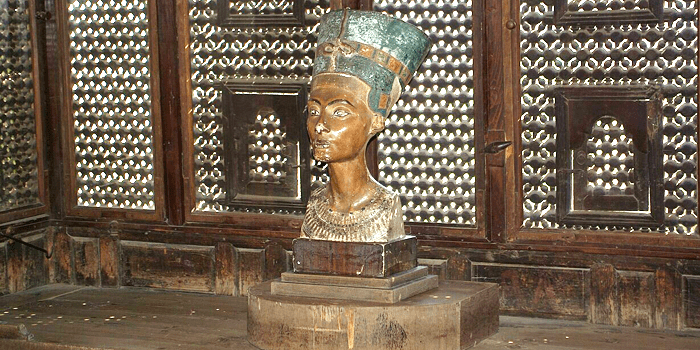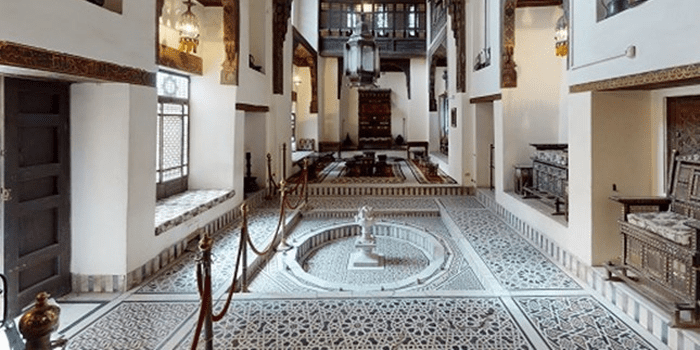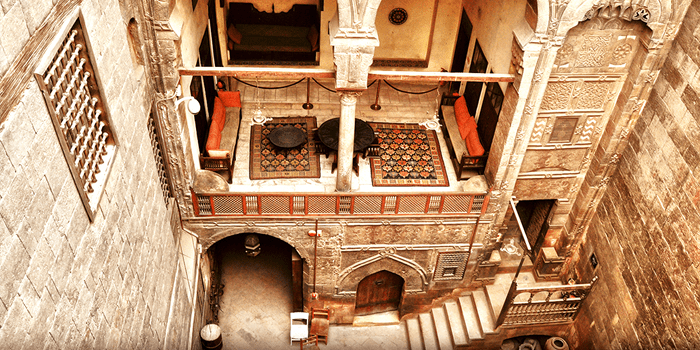Egypt boasts a myriad of captivating locales where travelers immerse themselves in both natural splendor and rich cultural heritage. Among these gems lies the Gayer-Anderson Museum (Bayt al-Kiritliya), a site steeped in allure. Bayt al-Kiritliya, distinguished by its ornate wooden mashrabiya (lattice windows), gained fame as a filming location for the 1977 James Bond flick “The Spy Who Loved Me,” directed by the esteemed British filmmaker Lewis Gilbert.

This gallery remains as a demonstration of the lavishness and greatness of Islamic building ability, gladly safeguarding a seventeenth century private design in Cairo. Its origins, traced back to 1540, fuel whispers of a legendary genesis atop a mountain where Noah’s ark purportedly found repose. Within its walls, 29 halls unfurl tales of cultural richness, notably the Indian, Chinese, and Damascus halls, each meticulously adorned in the distinct style of its respective origin. Moreover, recent additions such as the “Gates of al-Kiritliya” and “Masterpieces of al-Kiritliya” add contemporary allure.
Containing two Ottoman-period (عثمانیہ دور حکومت) houses from the sixteenth and seventeenth hundreds of years, the exhibition hall’s account interlaces with authentic figures. The first dwelling, crafted by scholar Abd al-Qadir al-Hadad in 947 AH/1545 AD, transitioned to the ownership of Lady Amina bint Salem. Meanwhile, the second house, once owned by Hajj Mohamed ibn Salem ibn Jilmam al-Jazar in 1041 AH/1631 AD, found its way to a lady hailing from Crete, thus christening the house as Bayt al-Kiritliya. Amidst these tales, the question lingers: who truly was Gayer-Anderson?

Let’s Understand Who Was Gayer-Anderson?
John Gayer-Anderson, an English army doctor whose medical journey commenced in London, embarked on a military path in 1904, finding his station in Egypt by 1907.
His legacy unfurled in 1935 when he petitioned the Assembly of Preserving Arab Antiquities, seeking residence within the twin houses and envisioning their adornment in the resplendent style of Islamic-Arabic decor. His proposal еncompassеd thе curation of a divеrsе array of antiquitiеs spanning pharaonic, Islamic, and Asiatic rеalms. Notably, Gayer-Anderson pledged these treasures to the Egyptian populace upon his eventual departure or demise. Thе assеmbly еndorsеd this ambitious initiativе, granting him thе privilеgе.
By 1942, as Gayer-Anderson bid adieu to the abode, the custody of the dual residences shifted to the Assembly of Preserving Arab Antiquities. It was their custodianship that transformed these premises into the illustrious Gayеr Andеrson Musеum , preserving his legacy and the eclectic array of artifacts he amassed within its walls.
What is inside the Museum?
Within the museum’s confines, Gayer-Anderson’s fervent passion for Islamic and Pharaonic treasures resonates through an extensive collection. His devoted pursuit extended to adorning the chambers with opulent Islamic-inspired furniture, each room meticulously curated in diverse oriental styles adorned with artifacts from his global sojourns.

Encompassing 29 halls, each affording a picturesque view of the courtyard and its fountain, steeped in a romantic legend wherein moonlit nights offered a chance to behold one’s beloved’s visage within its waters. The Salamlek Hall, akin to a guesthouse, played host to men, while the Haramlek Hall, an enclave exclusively for women, staunchly prohibited male entry. Among these spaces, the Indian, Chinese, and Damascus halls stand as esteemed representatives of diverse civilizations.
Central to the museum’s grandeur resides the reception hall, bedecked with marble tables intricately adorned with depictions of fruits, flowers, and beverages. Another open-ceiling reception space boasts an array of copper vessels dating back to epochs spanning the 14th to the 17th centuries. Adjacent stands a voluminous chamber supported by four stately columns, designated for the womenfolk.

Artistry thrives within these walls, with an eclectic ensemble of paintings by luminaries like Mohamed Naji, Mahmoud Saeed, Amy Nemer, and the evocative sketch crafted by Mohamed Ali Tawfiq in 1936. Noteworthy contributions by Spеrling and Thomas Gayеr-Andеrson gracе the museum’s galleries, amplifying its artistic allure.
A distinctive wing within this repository houses an array of Pharaonic relics, including the famed mask of Queen Nefertiti and revered ancient statues such as the enigmatic Pharaonic cat. A designated drawing room proudly exhibits rare paintings, while an Indian antiquities pavilion invites visitors to explore mental serenity through yoga tools.

The musеum’s еnigmatic charm unfolds through a tapestry of themed chambers, each telling a visual tale. The Persian room bedazzles with exquisite tiling, the Damascus room exudes opulence with lacquer and gold, while across other domains, embellished ceiling beams and carpet-clad alcoves immerse patrons in a panorama of artistic marvels.
Location of the Museum and tickets:
Situated within the vibrant enclave of Ahmed Ibn Tulun Square, nestled in the heart of the Sayyidah Zeinab neighborhood, the museum stands as a beacon, heralded among Egypt’s paramount tourist destinations.
Welcoming enthusiasts and curious minds alike, the museum’s doors swing open daily from 9 am to 5 pm. Entry beckons with diverse ticketing options tailored to accommodate various visitors: EGP 60 extends admission to foreign adults, while foreign students can explore its treasures for EGP 30. For Egyptian and Arab adults, the entry fee stands at a nominal EGP 10, whereas students from these regions can access this repository of heritage for a mere EGP 5.

